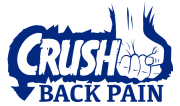Exercises for lower back pain that work
Start with these four exercises and do them daily. Work on these for four weeks, gradually progressing the volume.
After four weeks check out Herniated Disc Exercises: Jumpstart Healing, Erase Pain for more lower back pain exercise options.
This article is specific for herniated disc exercises. Any exercise that is good for the disc is good for lower back pain. It’s that simple. Often times lower back pain related to a disc issue.
The best exercises for lower back pain engage the core WITHOUT loading the discs and facet joints excessively
Research shows that exercise effectively reduces lower back pain, improves function, and prevents future recurrences.
While general exercise can be effective there are some exercises that are better than others. Especially during an acute bout of lower back pain.
The key is focusing on exercises that engage the muscles that stabilize the lower back during activity. These muscles are commonly referred to as “core” muscles.
There are endless variations of core stability exercises. The problem is some of these exercises result in excessive loading through the lumbar discs and facet joints. Lower back pain is often related to a disc or facet joint.
Exercises that overload the discs and facet joints can prolong the healing process or make lower back pain worse.
Since many people are doing the wrong exercises or even the right exercises the wrong way, their lower back pain gets worse. So they don’t exercise at all.
Not exercising at all can be just as bad for the lower back as doing the wrong exercises.
The discs, muscles, and joints of the lower back are living, biological tissues and require exercise to heal and stay healthy.
Walking is another great exercise for lower back pain
Walking engages the trunk musculature while simultaneously promoting load sharing through the lumbar tissues.
Load sharing means that the discs, facet joints, muscles, and ligaments are all working together to distribute loads through the lower back.
This reduces pain and inflammation, helping the healing process along.
Walking at a brisk pace with arm swing has been proven in the lower back pain research literature to decrease pain and improve function. This type of walking is the best place to start.
Weighted walking actually reduces muscle tension through the paraspinal muscles, decreasing loads through the lumbar tissues. This is a more advanced strategy that can be incorporated when back pain is present but not acute.
Once your back begins to heal and becomes less painful begin to incorporate some more general exercises into your program.
Pull-ups and dips are great exercises to consider.
Exercises for lower back pain...pull-ups and dips
Pull-ups and dips allow you to work your entire trunk and arms with minimal load through your lumbar spine.
Additionally you get a nice traction force through your lower back with both exercises.
Traction decompresses the lumbar discs and facet joints and has the potential to decrease lower back pain.
Exercise for lower back pain is the only treatment approach proven to decrease the chances of future lower back pain episodes. It’s the best bet for consistent, long-term pain relief.
For more videos that show you how to beat back pain subscribe to the Crush Back Pain channel.
FAQs
What exercises are good for lower back pain?
Any exercise that works the trunk and hip girdle muscles without placing excessive forces through the lumbar spine is generally good for lower back pain.
Walking and lumbar stabilization training should be the foundation of any lower back pain exercise program.
When lower back pain is related to a herniated or bulging disc directional preference work is often effective. This simply entails determining what direction of lumbar movement decreases pain then using that directional movement as a therapeutic exercise.
Research shows that staying active and resuming regular activities is more effective at decreasing lower back pain compared to usual care. Usual care involves advice to rest and medications.
What are the best exercises for lower back pain?
The best exercises for lower back pain are the exercises that protect the spine while engaging the core musculature. Without causing any activity limiting pain.
This might be walking or specific lumbar stabilization training. It could be upper body training, like dips and pull-ups, while you let the lower back symptoms calm down some. It may be swimming.
Basically any exercise you can do that keeps the lumbar spine in a neutral position and involves the trunk, upper body, and lower body muscles is good.
This is easy to figure out. The exercises that you’re able to do and that feel good, do. Any exercises that just don’t feel right or make your back more painful, don’t do yet. As the lower back heals and pain decreases reintroduce the exercises that you could not tolerate before.
What are good exercises for lower back pain?
Walking, lumbar stabilization training, directional preference work if a disc is involved. Any exercise that engages the core musculature and hip girdle musculature while maintaining the lumbar spine in a neutral position is usually good.
This could be anything from strength training to swimming. The key is to work on exercises that do not place excessive forces through the tissues of the lumbar spine.
Herniated Disc Exercises covers the principles for designing an exercise program that is lower back friendly. A number of exercise examples are covered as well.
What exercise equipment is good for lower back pain?
Truth be told, exercise equipment is usually not so great for lower back pain.
The majority of exercise equipment requires the user to sit. Sitting places the lumbar spine in flexion. For most people with lower back pain sitting and exercising are not the best idea. Unless the person is over the age of 60-65 and has spinal stenosis, then it is usually fine. But for people that are 18-60 years old who have lower back pain seated exercise equipment is not the best option.
Lat pull downs and rows using pulley machines can be OK, but it’s important to maintain a neutral lumbar spine. Especially with the rows.
You can usually get away with leg extensions but the lumbar spine needs to be kept in neutral and not allowed to round out.
The leg press should be avoided as it places excessive flexion through the lumbar spine.
Any type of exercise machine that involves seated lumbar flexion/extension with resistance should be avoided.
Generally the best exercises for lower back pain involve moving the body through space with or without resistance from a barbell, dumbbell, or kettlebell. Opposed to being in a fixed position with a machine and moving the apparatus.
Multi-joint, full body movements activate the core musculature and train your body to stabilize the spine through functional movement patterns.
Herniated Disc Exercises covers the foundational principles of safe, effective exercise selection for people with lower back pain.
Pages
- About Gage And The Crush Back Pain Programs
- Articles
- Back Pain
- Beat Back Pain Naturally
- Checkout
- Consultations
- Contact
- Crush Back Pain Programs
- Disclaimer
- Exercise for Lower Back Pain
- Herniated Disc Program
- Lumbar Stabilization Program
- Privacy Policy
- Program Finder
- Purchase Confirmation
- Purchase History
- Save $25-$50
- Sciatica
- Sitemap
- Transaction Failed
Post
- Safe Exercises For A Bulging Disc
- L5-S1 Disc Bulge Recovery Time
- The Stages Of Herniated Disc Healing: Timeline and Details
- 8 Signs Your Herniated Disc Is Healing
- 3 Effective Sciatica Foam Roller Exercises
- The Top 5 Ab Exercises For Sciatica
- 5 Bad Exercises For Sciatica
- Exercises To Relieve Sciatica
- The Top 5 Leg Exercises With Sciatica
- 13 Exercises That Help Sciatica
- Herniated Disc Recovery Time…How Long Does it Take?
- Herniated Disc Exercises: Jumpstart Healing, Erase Pain
- Do Bulging Discs Heal? Yes…Three Ways to Maximize Healing Potential
- How to Heal a Herniated Disc Naturally
- Herniated Disc Exercises to Avoid
- What is an Annular Fissure? Everything You Need to Know
- Safe Exercises To Do With A Bulging Disc
- Lower Back Pain in the Morning? Do This…
- Stretches for Lower Back Pain: Focus on Two Areas
- The Top 3 Exercises For Sciatica
- Exercises for Lower Back Pain…What Works Best?
- Safe Exercises to do With a Herniated Disc
- Lower Back Pain After Squats, Fix It Today
- Core Stability, What It Is…Why It’s Important
- Is Walking Good for Lower Back Pain?
- Your Lumbar MRI…Does It Matter?
- Back Pain Relief: What REALLY Works
- Lower Back Pain When Bending Over
- Powerful Bulging Disc Exercises that Destroy Pain
- Lower Back Pain While Driving? Do This Today
- Lower Back Pain From Squats?
- How to Sleep With Lower Back Pain
- Three Ways to Beat Lower Back Pain When Sitting
- Stop Stretching Your Lower Back and Do This Instead
Post
- Disc Protrusion
- Facet Injections
- Facet Joint
- Intervertebral Disc
- Paraspinal Muscles
- Erector Spinae Anatomy and Function
- Multifidus
- Microdiscectomy
- Laminectomy
- Lumbar Fusion
- Sciatica
- Facet Joint Arthritis
- Spondylosis
- Spondylolisthesis
- Degenerative Disc Disease
- Pinched Nerve in Lower Back
- Vertebral Endplate
- Lumbar Disc Replacement
- Modic Changes
- Disc Space Narrowing
- Sequestered Disc
- Disc Extrusion
- Bulging Disc
- Herniated Disc



